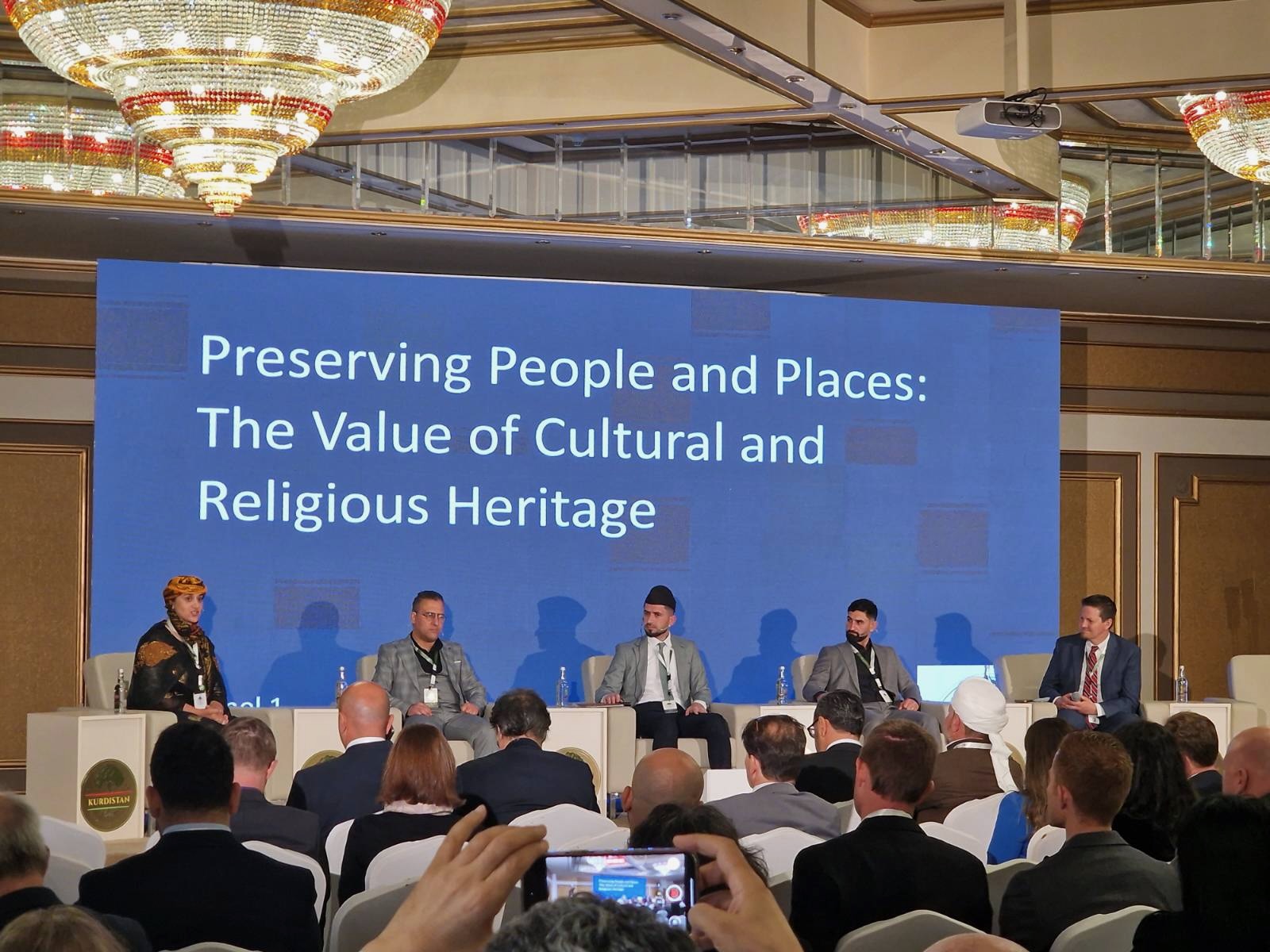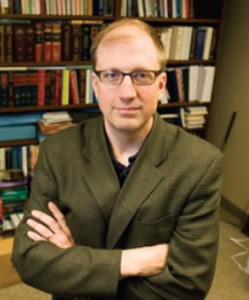Ruling in favor of Obergefell, the Supreme Court decided that states must issue a marriage license between people of the same sex, legalizing same-sex marriage in all 50 states. In this week’s conversation, scholars discuss the implications of this decision for religious freedom and explore the wider role of religion in American public life.
By: Thomas C. Berg
Obergefell v. Hodges, declaring a constitutional right to same-sex civil marriage, is a historic vindication of the rights of same-sex couples and the welfare of their children. It also leaves open many questions whether the rights of religious objectors will receive meaningful protection too. Justice Kennedy’s majority opinion correctly held that the challenged state laws denied same-sex couples their fundamental right to civil marriage under the Due Process Clause and denied them equal protection of the laws in access to that right. Same-sex couples fit within the most accurate description of today’s institution of civil marriage: a committed mutual relationship of multi-faceted intimacy (emotional, domestic, and physical), often but not always directed to raising children. And the reasons given for excluding same-sex couples did not come close to justifying the burdens from that exclusion.
Now the question shifts to how far courts and legislatures will protect the religious liberty of dissenters, from the wedding photographer to the Catholic adoption agency to (further in the future) the federal tax-exempt status of religious organizations that discriminate against same-sex couples. Such disputes predated gay-marriage recognition, but the Court’s declaration of a constitutional right will surely intensify the pressure on organizations and individuals that continue to maintain marriage is only a male-female union.
We can and should protect both same-sex couples and religious dissenters. Indeed, as Douglas Laycock, others, and I argued in an amicus brief in Obergefell, the basic principles that support religious liberty—the right to live one’s life with integrity, consistent with a fundamental element of one’s identity—also support the right of same-sex couples to marry.
Religious liberty questions were not directly before the Court, so unsurprisingly it said relatively little about them. What it did say was incomplete and inadequate but should not be taken as the last word.
The majority gave assurances that religious organizations and persons “may continue to advocate with utmost, sincere conviction” that same-sex marriage is wrong, and that they will receive “proper protection as they seek to teach the principles” of their faith. This suggests strong protection for religious speech and actions tied to speech. For example, a religious organization may maintain standards of sexual conduct for its leaders, under the “ministerial exception” validated in Hosanna-Tabor v. EEOC, and for other employees (for example, certain schoolteachers) when their conduct may undermine the group’s message, under the right of “expressive association.”
But the opinion makes no mention of the constitutional right to exercise religion: to follow religious conscience in cases not directly involving speech, for example, an evangelical college refusing to extend married-student housing to same-sex couples. Religion involves far more than belief or expression, and if an organization cannot act according to its principles, it will soon lose the ability to express and maintain them. Proponents of same-sex marriage have correctly argued that a life of integrity encompasses public conduct (marrying one’s partner); religious dissenters have an analogous interest.
Religious conduct is protected by the Free Exercise Clause (especially religious organizations’ “internal” decisions under Hosanna-Tabor), the Religious Freedom Restoration Act (limiting federal laws), state constitutional provisions and religious freedom statutes, and specific statutory exemptions. These rights, of course, have limits, as is being learned both by government clerks who object to issuing marriage licenses and by bakers who object to serving same-sex weddings. But free exercise should not be ignored, and the majority’s omission of it from the brief religious-freedom passage should create no inference that it’s unimportant.
Religious liberty may also be affected indirectly by the reasoning Obergefell used to support marriage rights. The majority said the state’s denial of marriage not only burdens a fundamental right but also demeans and disparages gays and lesbians and their children. That bodes ill for religious freedom protections if it means the traditional opposite-sex view of marriage is per se demeaning and disparaging. The majority elsewhere expressed respect for the traditional view, saying that it often reflects “decent and honorable religious or philosophical premises.” But those two passages sit uneasily together.
To resolve the tension requires distinguishing the state from the objector. It’s one thing for a state to deny marriage rights, imposing wide-ranging harms on gay and lesbian families, where the public reasons advanced for the denial have proven manifestly insufficient. It’s another for a traditionalist religious organization to seek to follow its principles by avoiding participating in or directly facilitating, in its own activities, a marriage inconsistent with those beliefs. Obergefell’s point is not that the traditionalist view is demeaning in itself (how then could it reflect “decent and honorable” premises?). The point is that imposing significant disabilities on the basis of the traditional view, without good reasons of state policy, is demeaning in that it gives no consideration to the lives of same-sex families. Obergefell says it’s the state’s action that demeans, but it could have made this distinction more clearly.
As states address these conflicts, many will tend to devalue the minority within their boundaries. Blue states may confine protections for religious organizations only to the house of worship and the clergy, ironically ignoring the progressive affirmation that service activities lie at the core of religious exercise. State religious freedom provisions, constitutional and statutory, will play a role, with free expression principles, in allowing religious organizations necessary space to follow their beliefs.
In red states, one danger is that exemptions of religious traditionalists will go too far, like the failed 2014 Kansas bill that would have allowed both county employees and large for-profit businesses to refuse to serve same-sex weddings with little regard for the hardship on the couples. Today, threats of economic boycotts may deter red states from such unbalanced legislation. But they can maintain insensitivity to gay rights by simply declining to pass antidiscrimination laws in the first place. Here religious exemptions become relevant again. Some of the 30 or so states that do not protect LGBT people against employment discrimination might be willing to do so in the coming years, but that will be far less likely if they cannot include meaningful accommodations for religious organizations with traditionalist sexual ethics. Religious exemptions remain an important device, among others, for protecting both sides in this bitter debate.
Thomas Berg is the James L. Oberstar Professor of Law and Public Policy at the University of St. Thomas and co-director of the university’s Terrence J. Murphy Institute for Catholic Thought, Law, and Public Policy.
This piece was originally authored on July 2, 2015 for the Religious Freedom Project at Georgetown’s Berkley Center for Religion, Peace, and World Affairs.
THE RFI BLOG

Oral Argument in Charter School Case Highlights Unconstitutional Motives Behind OK Attorney General’s Establishment Clause Claim

Largest Longitudinal Study of Human Flourishing Ever Shows Religion’s Importance

Keys To Human Flourishing: Faith And Relationships Outweigh Wealth

RFI Champions Religious Freedom at Kurdistan’s First National Prayer Breakfast

RFI’s Ismail Royer Speaks at Supreme Court Rally for Religious Parents Seeking Opt-Out
CORNERSTONE FORUM

Reaffirming Religious Freedom: Bridging U.S. Advocacy and Iraq’s Constitutional Framework

Political Polarization, Same-Sex Marriage and Religious Liberty

Bridging the Gap Between International Efforts and Local Realities: Advancing Religious Freedom in the MENA Region

Challenges to Religious Freedom in Iraq and the Critical Need for Action


